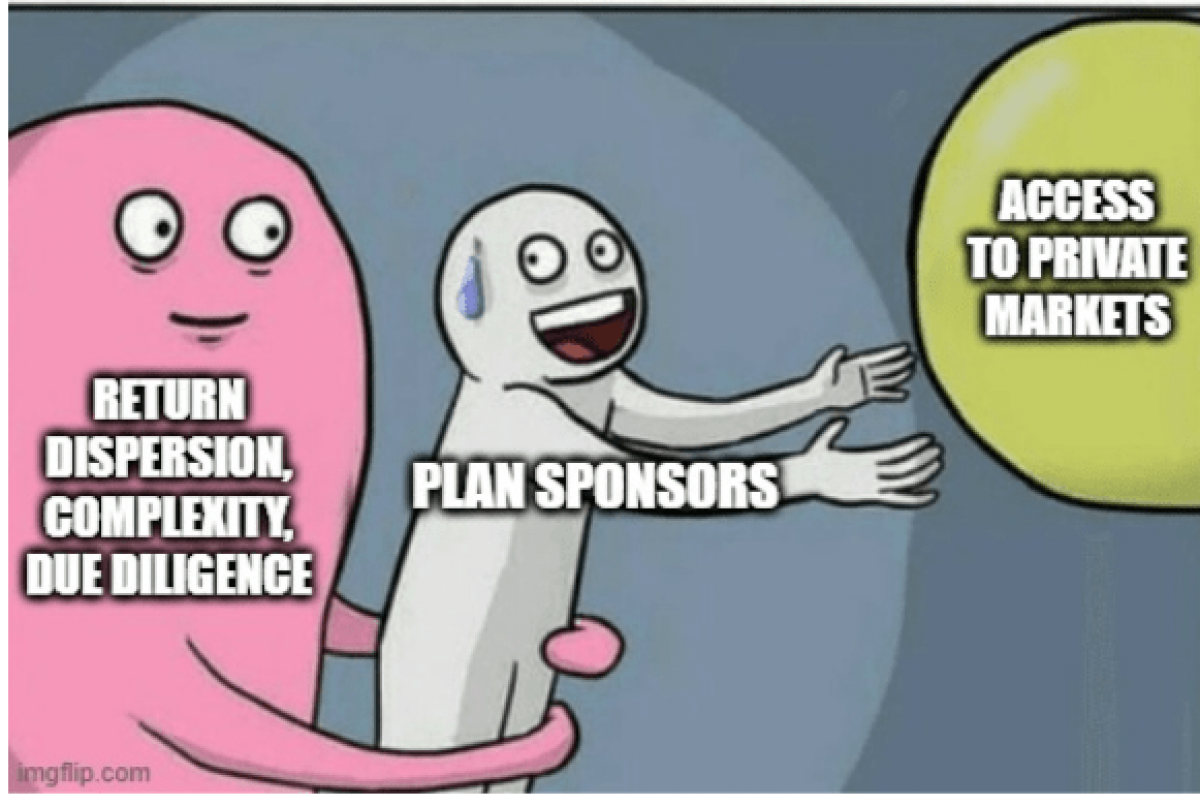By Aaron Filbeck, CAIA, CFA, CIPM | Associate Director, Content Development at CAIA Association
While every retirement plan participant has unique life and planning circumstances, they generally (and almost evenly) split into two broad categories regarding investment philosophies: the do-it-yourself crowd and the do-it-for-me crowd. The do-it-yourself crowd typically follows market news, makes active allocation decisions, and selects their own managers. The do-it-for-me crowd typically are hands-off investors and (hopefully) rely on a fiduciary advisor to make selections for them or simply invest in a target date fund that matches their year of retirement.
While not a perfect solution, target date funds have delivered a great benefit to the vast majority of participants. They’re easy to implement, easy to understand, and generally allow the participant to focus on their careers and saving while their investments operate on autopilot. It also gives them a goal, which helps them stay invested. These benefits have quickly been realized and the assets have followed. According to Fidelity, roughly half of retirement plan participants opt to invest in target date funds, up from 16% of participants 10 years prior.
It’s for these reasons that I am concerned about the recent announcement from Department of Labor, allowing private equity to be used within professionally managed funds on retirement platforms, such as target date funds. While private equity funds still cannot be offered directly, I worry about the precedent it sets and the potential ripple effects from introduced complexities without proper education or, frankly, preparation for plan sponsors
And yet, we must acknowledge how rapidly capital formation is changing across global markets. Companies are staying private longer relative to history. Some remain private forever or simply use an IPO to provide liquidity to the founder (#WeSeeYouWeWork), at which point most of the value creation has been already been realized.
CAIA Association advocated for the democratization of private markets in our recent Next Decade Report. Doing so gives the end investor an opportunity to participate in this growth that has historically only been enjoyed by institutional investors. However, lifting the curtain must come with proper education requirements and guardrails to gain access. Without both, there could be serious implications for advisors, participants, and even the mutual fund structure itself.
In addition to the many other pressures good financial advisors and plan sponsors already face using existing investment vehicles, they are now subject to a brand-new list of complexities. By introducing illiquid and historically unregulated funds onto retirement plan fund menus, both are thrown into an industry historically overseen, managed, and mitigated by institutional pension investors with expertise in investment and operational due diligence.
What about participants? Participants may be intelligent people, but that doesn’t mean they understand the complexities of investing. If we make a broad assumption that target date funds are designed for the less sophisticated investor, then aren’t we doing them a disservice by introducing something as complex as private equity? It’s not like this impacts a small population of retirement savers! Wouldn’t it make more sense to allow do-it-myself participants to opt-in to private funds selected by experts rather than having do-it-for-me participants opt-out of their “set it and forget it” allocation? (It’s hard enough remembering your password!)
Finally and importantly, we need to address fund structure. Under the Investment Company Act of 1940, allocations to illiquid investments in mutual funds are limited to 15% of the fund’s assets. The reality is that the mutual fund structure isn’t conducive to illiquid investments unless the investors in the fund have a long time horizon. Perhaps that works for target date funds, but the mismatch between illiquid securities lack of liquidity and the investor’s ability to demand liquidity could be a recipe for disaster. What does that mean during a prolonged market downturn, or what happens when the private equity fund itself goes through a prolonged downturn? We’ve seen how en masse redemptions impact mutual funds, liquid or not… see here, here, and here.
The benefit of finding a way for individual investors to participate in private markets is not lost on me, but we must put our best foot forward as an industry. This move serves GPs well, but it doesn’t seem like the potential LPs were top of mind during the decision-making process. The first great mistake will have ripple effects and could bring great harm to participants, not to mention the damage to what little trust our industry has built with them. Even further, it could distract from the larger much needed discussion around democratizing private markets.
Regardless of your opinion on allowing access, let’s just all agree not to use Main Street as a trial run.
Seek diversification, education and know your risk tolerance. Investing is for the long term.
Aaron Filbeck, CFA, CAIA, CIPM is Associate Director, Content Development at CAIA Association. You can follow him on Twitter and LinkedIn.




